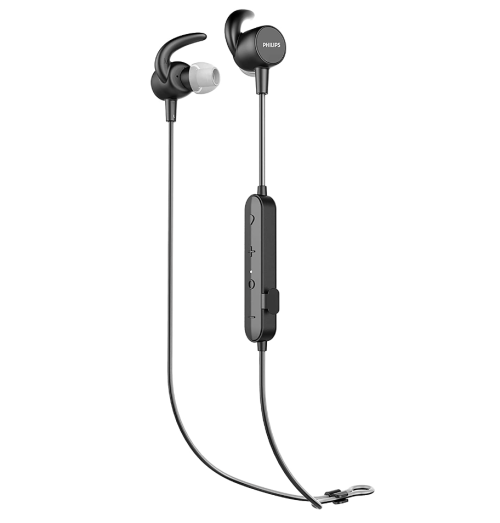Our editors independently select these products. Making a purchase through our links may earn Well+Good a commission
Can You Get a ‘Runner’s High’ From Walking? Experts Say Yes
Learn why an exercise physiologist says it is possible to get a runner's high from walking—and how to go about it.

Runners will tell you they get all kinds of things out of their runs. Think: Stronger legs, a healthier heart, decreased stress. But one of the most legendary perks of running is the elusive “runner’s high.” Characterized by a feeling of bliss or euphoria and reduced pain, it can happen during or after any kind of intense exercise that elevates your heart rate for an extended period of time.
Experts in This Article
“It is often described as a feeling of being ‘high’ and can be accompanied by a surge of positive emotions and a sense of well-being,” says Karissa Bollinger, a certified exercise physiologist, ultramarathon runner, and the owner of Golden Teacher Wellness. There are, no doubt, different intensities of this euphoria, depending on how and how long you exercise, your underlying emotional state, and your individual physiology.
But here’s the thing: For many of us these days, hot girl walks are more our jam than a high-impact activity like running. So we’ve gotta ask, can you get a runner’s high from walking workouts?
First things first: What creates a runner’s high?
Bollinger says that the exact cause of a runner’s high from a physiological standpoint is somewhat unclear. “But it is thought to be related to the release of endorphins,” she says. “During exercise, the body releases endorphins to help reduce discomfort and pain, and promote a positive mood. Endorphins can also produce a sense of well-being and a heightened sense of relaxation.”
However, endorphins may not be the only contributing factor. According to Bollinger, “studies have shown that other chemicals and hormones such as dopamine, serotonin, and anandamide may also play a role in contributing to the runner’s high sensation.”
Is walking enough to cause the same reaction?
Although a runner’s high is usually attributed just to running—hence the name of the term—it is possible to get a “runner’s high” from any aerobic exercise that increases your heart rate and breathing, like cycling, swimming, and, yes, walking.
However, in order to achieve a runner’s high by walking (or any type of activity, for that matter), Bollinger says that the intensity must be high enough and the walk must be long enough.
“Typically, the heart rate should be elevated to around 60 to 85 percent of the maximum heart rate for at least 20 to 30 minutes,” says Bollinger. (To calculate your max heart rate, subtract your age from 220, she says. “For example, if you are 30 years old, your maximum heart rate would be approximately 190 beats per minute.”)
Tips for getting a runner’s high from walking
Since walking is typically lower intensity, you’ll have to get a bit creative to get that heart rate up. Think: increasing speed, increasing resistance (by walking up an incline or adding weights), or a combination of both. Here are Bollinger’s suggestions.
Wear a heart rate monitor
Bollinger recommends wearing a heart rate monitor to help you gauge the intensity of your walking workouts. (There are many types available, including chest straps, smartwatches, and earbuds.) “By monitoring your heart rate, you can ensure that you’re staying within your target zone and optimizing your workout to reach that endorphin-releasing state,” she says.

Philips ActionFit SN503 Wireless Bluetooth Earphones with Heart Rate Monitoring — $39.00
These sweat-proof earbuds have an embedded sensor that tracks your heart rate. They’re compatible with fitness-tracking apps like Strava and Runkeeper.
Incorporate hills
Do incline treadmill walks or find routes with long uphill sections to help boost the intensity of your walks.
Increase your speed
Walking at a faster pace can help increase your heart rate and enhance cardiovascular fitness. Bollinger suggests incorporating intervals of 30-second to 1-minute bursts of faster walking throughout your walking session.
“Alternating between periods of fast walking and slow walking can increase calorie burn, engage more muscles, and improve cardiovascular fitness and elevate heart rate,” says Bollinger. “Try intervals of hiking or jogging for more of a challenge.”
Pack on the pounds
One way to increase resistance is by wearing a weighted vest or ankle or wrist weights like Bala bangles, or carrying dumbbells or a backpack.

Bala Bangles — $55.00
Add some ankle or wrist weights in style with this comfortable option from Bala. These bangles come in 1, 2, and 1/2 pound options.
ThirdLove Just Launched Bras That Help Balance Your Body Temperature—Here’s Why That’s a Game-Changer for Women in All Life Stages

These Are the Only Types of Underwear You Should Be Wearing, According to Gynecologists

These Are the Summer Essentials You Should Bring With You Every Time You Leave the House, According to a Derm and an RD

Incorporate bodyweight exercises
Adding lunges, squats, or calf raises during walking intervals can help strengthen your leg muscles. Plus, engaging more of the large muscles in the legs will require more physical work, leading to an increased heart rate.
Change terrain
Bollinger says that walking on sand, rocky trails, or other rough terrain can make the cardio more intense while also challenging your balance and working your lower body and core muscles more.
Be patient
With consistency in your workouts, your fitness level will improve, so you may notice it becomes easier to sustain the intensity and duration of your walking workouts to experience a “walker’s high.”
With that said, this effect can be elusive even for many runners. Bollinger says that it’s important to remember that whether or not you get that feeling of euphoria from your walking workouts, increasing your heart rate through cardio exercise like walking has many physical and mental health benefits: “Our body has a wealth of naturally-occurring chemicals that promote a positive mood, and harnessing these benefits through exercise can be a truly empowering and rewarding experience.”
Sign up for the Well+Good SHOP Newsletter
Get exclusive deals on wellness, beauty, fitness, and food products that have been hand-picked by our editors.
Got it, you've been added to our email list.







